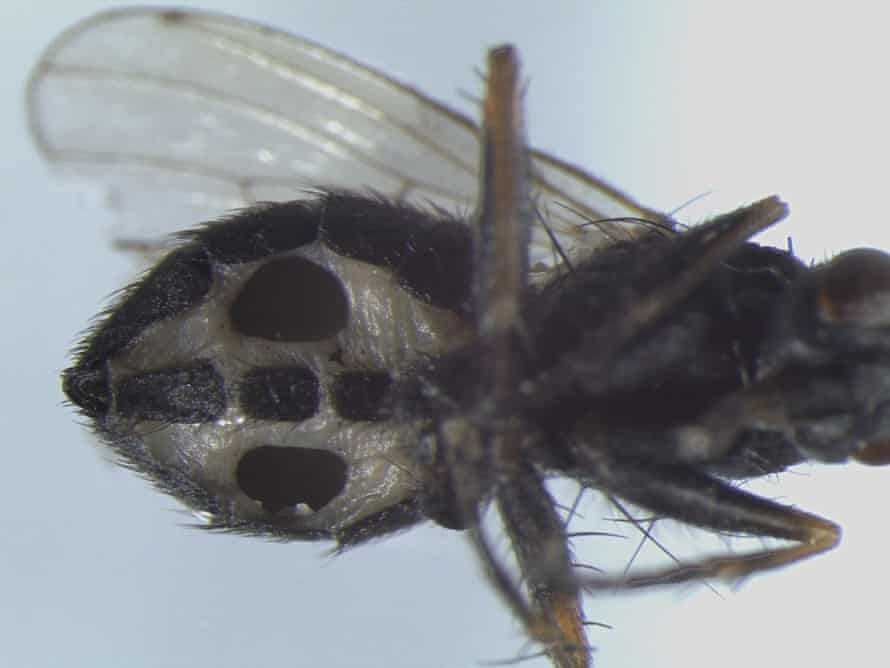Two new fungi species that infect flies and eject spores out of a large hole in the insect’s abdomen “like small rockets” have been discovered in Denmark.
The new species, Strongwellsea tigrinae and Strongwellsea acerosa, are host-specific and rely on two species of Danish fly – Coenosia tigrina and Coenosia testacea, according to researchers at the University of Copenhagen.
While most fungi spore once the host is dead, with strongwellsea, the host continues to live for days, carrying out normal activities and socialising with other flies while the fungus consumes its genitals, fat reserves, reproductive organs and finally its muscle, all the while shooting out thousands of spores on to other individuals.
After a few days, the fly lies on its back, spasms for a few hours and then dies, according to research by the University of Copenhagen and the Natural History Museum of Denmark published in the Journal of Invertebrate Pathology.
The unusual tactic of keeping the host alive while releasing spores is called active host transmission (AHT). It is an effective way of getting access to other healthy individuals. Scientists think the fungi could be producing substances that “dope” their hosts (sometimes colloquially referred to as “zombies”), meaning they can stay fresh enough to live for days after infection – only collapsing once there is nothing left in their abdomens but the fungus.
“We suspect therefore that these fungi may produce amphetamine-like substances which keep a fly’s energy levels high up until the end,” said lead researcher Prof Jorgen Eilenberg from the department of plant and environmental Sciences at the University of Copenhagen. Researchers also believe the fungi produce substances that keep microorganisms away from the fly fungal wound and keep it clean, but they are yet to test this.
“They work like small rockets,” said Eilenberg. “They are almost shaped like torpedoes and are designed for going fast.” If they land on another fly they stick to the cuticle and then wiggle their way into the abdomen, where they start to proliferate. Thousands of spores will be released out from a single fly.
The parasites probably only infect a small percentage of individuals – between 3 and 5% in a healthy fly population. Because the host continues to behave normally it is difficult to identify when it has been infected, which is why AHT is relatively under-researched. It has only been discovered in two complete genera – strongwellsea and a similar fungal genus called massospora, which uses cicadas in a similar way.

Strongwellsea tigrinae was discovered by Eilenberg in 1993 in North Zealand in eastern Denmark. Strongwellsea acerosa was first seen in a residential area in greater Copenhagen by one of his students, Dorthe Britt Tiwald, in 1998. Both have only now been officially declared new species. There are now a total of five known species of strongwellsea.
Dr Matthew Kasson, an associate professor of forest pathology and mycology at West Virginia University, who was not involved in this latest research, agrees strongwellsea may be producing the same “dope” compound as massospora, which he has researched. “It’s unclear how many species we have but I really think we’ve just scratched the surface,” he says.
“The reason this discovery is important is because we can’t make broad, sweeping conclusions about host manipulation and behavioural modification based on a single genus. Having a second genus like strongwellsea, which induces the same behavioural response, is important in solving this bigger puzzle of active host transmission … Collectively, this group of insect-destroying fungi may represent the next frontier for drug discovery.”